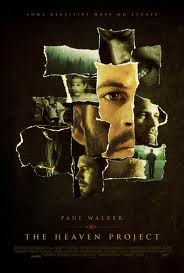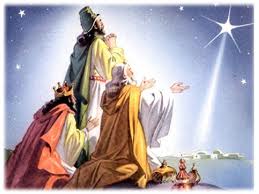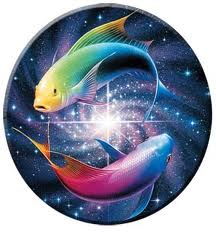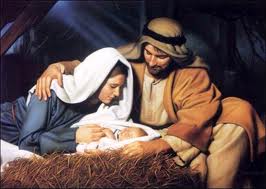|
Page 1 of 4 pages |
|
THE GOOD THIEF |
|
|
|
THE MAGI THE WISE MEN WHO ACCEPTED JESUS as revealed by the "Gospel Pesher" Codes |
|
excerpted from "Jesus and the Riddle of the Dead Sea Scrolls" by Dr. Barbara Thiering, PhD |
|
' "The Magi," A name for the Wise Men who came from the "East" to worship the baby Jesus soon after he was born. Known to be Astrologers because they found Jesus by following a star, commonly known as the "Star of Bethlehem." Every Christmas season we are all subjected to television programs giving a number of theories about what type of heavenly body or phenomenon this "star" really was, and why it seemed to wander across the sky. Now, do to the research of Dr. Barbara Thiering, PhD and her 1992 book Jesus and the Riddle of the Dead Sea Scrolls, we can know the answer to all these questions. Or we can, if we wish, just go on listening to more speculation, as before.
Traditional picture of Joseph entering Bethlehem with the pregnant Mary riding on a donkey. Neither the donkey or modern Bethlehem are factual!
Manahem was one of the founders of the "Diaspora Essenes". We can read about his activities, and the Magians (Magi) he became associated with on Page 27-28 of Barbara Thiering's book. "Diaspora Essenes shared the divergent calendar and many traditions of the Palestinian Essenes, but they did not espouse their unworldliness and strict views on morality. For the Palestinians, the Diaspora kind were "seekers after smooth-things", taking the easy way." "Manahem was a man of talent, who founded the Magians, whose name reflected their Babylonian culture. In 44 BC they had adopted the Julian calendar, introduced the previous year. It was compatible with their own solar calendar, long regarded by the Essenes as heaven's own calendar and the one on which all their prophecies were based. They began their year twice, on January 1 and at the March equinox, living like both Roman citizens and Jews." Jesus and the Riddle of the Dead Sea Scrolls --- page 27,28 NOTE BY Dr. Bob Holt, MD -- Partly because the MAGIANS believed the March equinox to be very important, and partly because of three different CONJUNCTIONS of Jupiter, Saturn, and Mercury in the constellation PISCES in the year 7 BC, the year Jesus was born, the MAGIANS (Astrologers) accepted Jesus as the looked- for MESSIAH in March of 7 BC.
"Jesus was born, not in Bethlehem, but in the building about a kilometer south of the Qumran plateau. He was born there because at the time of his birth he was officially classed as an illegitimate child." "Before the earthquake, while Qumran was still a monastery, there had been a place where the illegitimate children destined for monastic life were born and prepared for their future. It was at Mird (Hyrcania), some sixteen hours' walk from Jerusalem in a south-easterly direction." "To reach the spot, one goes east from Jerusalem through Bethany, then south-east to the mountain known as Jebel Muntar, the highest point in the district, 524 meters. From here one can still see Jerusalem in the distance, and, all around, low rounded hills with almost no vegetation. The tract then follows a wady a few kilometers further." "A young girl in Jerusalem who found herself pregnant would follow this path, and on the arid bank of the wady give birth to the child, leaving it there to die." "The predecessors of the Essenes, however, had long had compassion on such children, bringing both males and females into their shrines as acolytes. When the monastic system developed, the males became monks, acting as servants of the priests." "After the earthquake, Qumran was no longer pure enough to be used as a monastery and sanctuary. When it was reoccupied about 11 BC, it was a center for celibates who had not fully renounced the world, like the Egyptian Therapeutae. They held less strict views on ritual and moral matters." "Some children born out of wedlock were still taken in by them, but -- since women were also now allowed to come to the center -- the mothers were allowed to stay with the infants. The woman bore and nursed her child in the building that was used by women in a state of menstrual uncleanness. The Temple Scroll shows that there had to be such a place outside every city, and another scroll gives the distance away for unclean installations: two thousand cubits, that is nearly five stadia, or a kilometer; an hour's walking distance." "There was a building at just this distance south of Qumran, as has been seen. A name for it is found in the Copper Scroll: "the queen's house". The Copper Scroll, a list of deposits of money in and around Qumran (coming from the second phase of the occupation of Qumran, when money, always unclean, could be stored in this defiled place), lists vaults at the buildings on the plateau, then goes beyond it to places around "Sekhakha", the ancient name for the wady that flows down and across to the Dead Sea just south of the end of the esplanade. The building was called "the queen's house" as the queen, the wife of the potential king David, was the superior there over the indigent women."
"Jesus was conceived and born during the reign of the high priest Simon Boethus, who was in power from 23 to 5 BC. He and his Boethusian party represented one of the two major points of view on ritual and moral questions that split Judaism at the time. The Boethusians took the stricter view on sexual morality, and for them Jesus was an extranuptial child, equivalent to an orphan. This meant that he must be born in the queen's house, "Bethlehem of Judea." "Herod, by now ageing and suspicious, and aware that the Davids had turned against him in their disappointment over the temple plan, was not in a mood to allow any heir who was not of his choosing to survive. Indeed, he was capable of destroying his own sons; he had his two sons by his favorite wife, Mariamne I the Hasmonean, put to death, out of jealousy, in the year that Jesus was born." "The Magians, Diaspora Essenes with the liberal outlook of the "seekers-after-smooth-things", accepted the legitimacy of Jesus, and wanted to protect him. Arriving at Qumran, they asked what house he had been born in, the place that would reflect his status as either orphan or prince. Herod heard of their arrival, and, wishing to find the child, asked his advisors "where the Christ should be born." They chose to answer the pesher meaning of his words -- that is, "what is the place where the David is 'born' as the adopted Son of God?" -- and answered it with the phrase requiring a pesher; "In Bethlehem of Judea"." "Herod had no knowledge of the pesher technique, he was the nominal head of the movement only and was not instructed in its mysteries. He thought they meant the literal Bethlehem. He sent there, but Jesus was not born in Bethlehem and so was spared by Herod's ignorance." "Throughout his life, the question of Jesus's legitimacy was determined according to which high priest was in power. If it was a member of the Boethus or related Caiaphas family, he could not succeed, and his brother James was the true heir. But if it was one of the Annas family, Jesus was the potential king. In a setting in which the high priests were political appointees, his fate was necessarily determined by political changes. The question of the high priests is, then, an essential thread running through the history." Jesus and the Riddle of the Dead Sea Scrolls --- page 50 - 53 By the year 33 AD, the year Jesus was crucified, Caiaphas was again high priest. And to him, Jesus was illegitimate, not qualified to be the Messiah. 36 years after Jesus' birth at the Queen's House "Simon Magus" [Simon Zelotes, Simon the Canaanite, Simon the Pharisee, Simon the Leper, the "Good Thief"]. The main character apart from Jesus. Simon Magus was a gnostic, self-styled miracle worker, head of West Manasseh Magians in the gospel period, and a Hellenist, in the war faction of the Twelve Apostles. He became Pope in AD 31. Jesus was associated with him, as Hellenists accepted Jesus as the David.". Jesus and the Riddle of the Dead Sea Scrolls --- page 395
|




